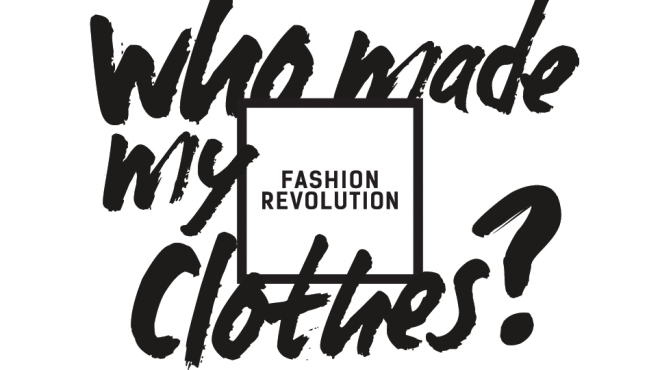On Fashion Revolution Day
It’s been two years since the Rana Plaza in Dhanka, Bangladesh collapsed. The disaster made international headlines that day, as it should have. Over 1,500 men, women and children lost their lives that day and another 2,500 were injured – some with lifelong effects.
Today, many of us are remembering their lives and the tragedy which cut them short and in our remembrance we’re asking for a change.
A revolution of sorts.
Today thousands of people donned their t-shirts and sweaters inside out and snapped selfies asking clothing companies the question: “who made my clothes?”
Back in 2010 I asked this same question to one clothing company, but without using social media.
Fresh out of college and having recently relocated halfway across the country, I found myself working part time at women’s clothing retailer The Limited. It wouldn’t have been my first choice, but it helped pay the bills. It turned out to be fun at times as well, dressing up mannequins like giant Barbies, helping women my own age find their first business suit for their first “real” job, delving through racks to help a customer find just the right dress for that special occasion. I didn’t mind it much. Sure, I wasn’t working in the field I had studied in college, but then again only two of my friends were.
About two months into my employment in the fashion world though, I watched a documentary that shook me up a bit. An acquaintance dragged me along to a showing of Made in L.A. – a film which follows the lives of three women working in sweatshop conditions in Los Angeles to provide clothing for the popular (and fantastically affordable) retailer Forever Twenty One.
[youtube=http://youtu.be/0QiuGcoCOfA]
In the film, I watched in horror as the women struggled to feed their children, worked long shifts while sick or without sleep, were denied access to health care, had their families blackmailed, etc. etc. My fast track to the clearance rack was derailing and colliding with my beliefs. How could I say that I loved Jesus and lived a life surrendered to His kingdom when I knowingly bought clothing that kept my sister enslaved?
I was shook up, to say the least.
My next shift at the store, I pulled my manager aside and explained to her the horrors I had uncovered over the weekend.
We’re not like that, right? I mean, Forever Twenty One is cheap. It’s kinda trashy. We sell really good stuff, high quality. Our employees are treated better, right?
My manager listened, her annoyance thinly veiled by her dazzling heavily mascaraed eyes.
Well, of course there are sweatshops and slaves. That’s just how it is.
She shrugged, sipped her iced quad shot nonfat caramel macchiato and went out back to smoke.
I stood there feeling like a kid who’d just discovered that the Tooth Fairy is a sham.
And I felt dirty. The nice, wool blazer on my back, the lovely emerald green cowl around my neck, the sparkles that clung to my eyelids and trickled softly in tear tracks on my cheeks. All made by slaves.
I quit my job the next week.
Over the past five years I’ve devoted hours upon hours of my time reading, researching, and emailing companies trying to get to the bottom of the supply chains for some of my favorite brands. I’ve written multiple posts on shopping ethically and the difference between “social enterprise” and “fair trade” and everything in between. And after all that, here’s what I know:
1. As consumers in the U.S. we should generally assume that there is corruption and exploitation in the supply chain.
Yep, you read right. whether it’s budget friendly Forever Twenty One or lighten your purse Banana Republic, if you’re buying at the mall, it’s probably the product of slave labor at some point. Maybe it was the man who picked the cotton, or maybe it was the child who cleaned it. Maybe it was the woman who stitched the seams. I operated under the assumption for most of my life that things from reputable stores or emblazoned with an expensive brand were somehow produced more ethically. This is simply not true.
2. We are responsible.
The book of 1 John says this: “This is how we know love: Jesus laid down his life for us, and we ought to lay down our lives for our brothers and sisters. But if a person has material possessions and sees a brother or sister in need and that person doesn’t care—how can the love of God remain in him? Little children, let’s not love with words or speech but with action and truth.”
What if the action and truth with which we share God’s love with the world is making sure that men and women have a safe place to work?
What if action and truth looks like making sure they earn enough to put food on their table and send their children to school?
What if action and truth looks like ensuring that those children are free and able to go to school, not spend hours in factories themselves?
If we as consumers in the U.S. know that our brothers and sisters on the other side of the world are suffering in sweatshops, working long hours and still unable to feed their families; that they are working in conditions which put their lives at risk and we refuse to do anything about it or are too busy to be bothered, then how can the love of God remain in us? Do our purchasing habits communicate the love of Christ to the world? Because elsewhere in Scripture we are told that whatever we do should be done for God’s glory. Last time I checked, that means everything.
Dear friends, let us not consume to “keep up with the Jones’s,” lives marked by an incessant striving for more. Let us love with actions and truth.
